“In the 1990’s, the Gonstead Technique is recognized throughout the global chiropra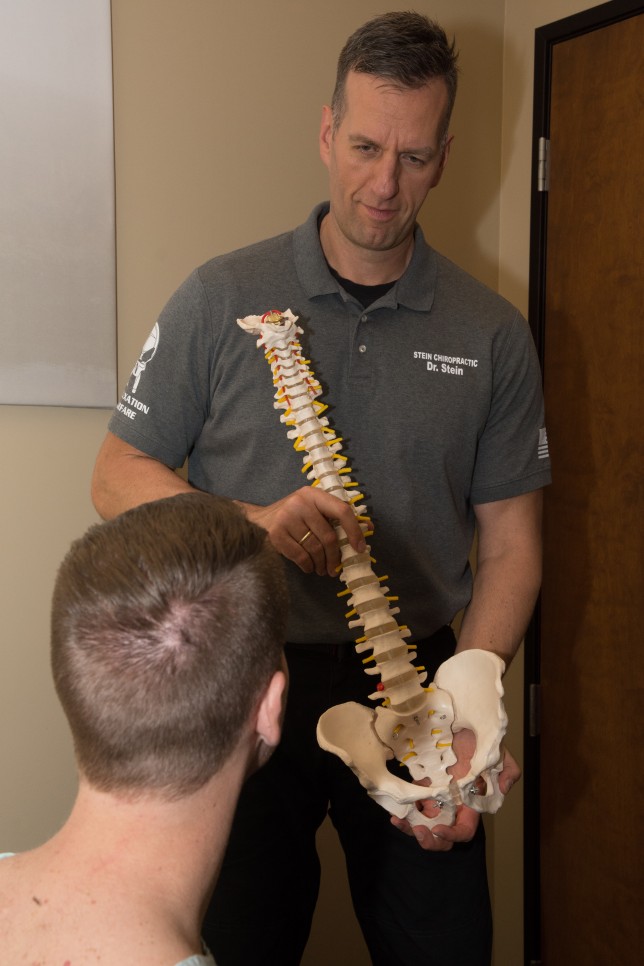 ctic community as one of the safest systems of evaluating and caring for conditions related to the spine.”
ctic community as one of the safest systems of evaluating and caring for conditions related to the spine.”
This is an article I read while I was still in school. It inspired me personally to become the best I was destined to be:
The Miracle Man
Dr. Clarence Gonstead
by Dr. Peter G. Fernandez
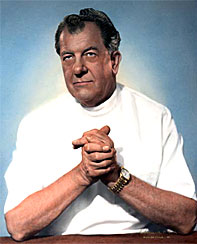
In 1961 while still in Chiropractic College, I heard rumors about a chiropractic “miracle man”- a great healer – who practiced in a little farming community somewhere up north. No one knew much about him or his practice except that his adjusting techniques worked miracles … and that he was brilliant. Brilliant bordering on genius.
An unusual man in many respects, he never finished seeing patients on the same day he started. A typical practice day began at 8 AM and ended at 3 AM the following day. He subsisted on only 4 hours sleep per day. Grabbing sleep when he could, he would sleep for the seven seconds it took for an adjusting table to lower from a fully extended position. The town he practiced in only had 1400 residents, yet he saw over 200 patients per day, seven days a week. He never advertised. Yet, he consistently drew patients (via word of mouth) from several hundred miles away as well as around the world.
With a background in mechanical engineering, he saw the human spine as an intricate engineering wonder and he studied it every chance he had. As a licensed pilot, he would fly from his own airstrip, located at his Frank Floyd Wright designed home, to the laboratory of Lincoln College of Chiropractic. There, he would dissect, study, stain, photograph and then reconstruct cadaver spines. The end result was one of the most precise studies of the effects of spinal derangement ever produced.
His work with thousands of spinal cases, his constant clinical studies of the spine, and his own innate knowledge of how the spine works explains his ingenuity in finding, identifying and fixing subluxations no one else could. This, coupled with his special gift of caring, gave him the ability to stop pain and promote the healing process. That’s what earned him the reputation as a “miracle man.”
In the early 60’s, an article appeared in Chiropractic Ethics and Economics with a headline, which said something like “We found the man!” It was a story about the “miracle man” who was; it turned out, Dr. Clarence S. Gonstead of Mt. Horeb, Wisconsin. The article explained that his original clinic was a small one-room office above a bank in downtown Mt. Horeb, where his wife served as his assistant. He had so many patients that they were often found sitting in the stairwell to his office. In fact, they were spilling out of his office, all the way down the stairs and onto the sidewalk. He saw he had to expand. Gonstead built a beautiful and much larger clinic for his patients at another location in downtown Mt. Horeb. Within a few years his practice was to outgrow these facilities also. Next, he began designing the largest, most complete chiropractic clinic in the world for his patients, just outside Mt. Horeb, Wisconsin … population approximately 1400. The article went on to say that he not only existed, but, at that point in time, he had begun teaching and was well on his way to becoming internationally acclaimed. He was most notably recognized for his research studies; his uncanny technique, which healed patients in one-third the time that it took most other treatment programs; as well as his reputation for treating problem cases. What earned him the most acclaim though, was the number of fellow chiropractors he treated. He was earning the reputation of being the chiropractor’s chiropractor.
In 1966 I came face-to-face with the man. I had ruptured a disc in my back and was in severe pain. My practice was suffering because I was unable to stand for more than a few minutes per day. I was receiving two adjustments a day; taking 18 pills; and getting four shots per day, just to keep the pain down. The pain was incredible. So bad that at one point, I had to physically crawl from my car to my home. I was unable to even walk. In addition to my private practice, I was a team physician for a professional football team. The team also had a M.D. who happened to be a good friend of mine. He noticed my condition one-day said, “Enough is enough,” and gave me an exam. After he examined me, I asked for his recommendations. Was surgery necessary? I just wanted the pain to stop.
“Don’t ever let anyone do surgery on you, Pete,” the M.D. said. At his specific recommendation, I was put on a plane that same evening to see the chiropractor I had heard about five years earlier. The so-called “miracle man”, the one man, this M.D. knew could help me without using surgery. After one week with two adjustments per day, I was headed back to my own practice in Florida. No surgery. No drugs. Just pure chiropractic healing. His philosophy was, “Find the problem. Fix it. Then leave it alone.”
I had been a personal witness to the fact that there was indeed chiropractic “miracle man”. By the mid-70’s Dr. Gonstead’s reputation had grown right along with the size of his clinic. Doctors and patients from all over the United States and Canada eagerly sought his expertise. He provided seminars to share his techniques with other doctors. These techniques were rooted in his extensive knowledge of the precise workings of the human spine using sound mechanical and biological principles.
The size of his once humble clinic grew to 19,000 square feet with seating for 106 patients in the reception area. To have the reception room filled to capacity was not unusual. Dr. Gonstead plainly needed help. Help did arrive. Dr. Alex Cox, a Palmer Chiropractic College graduate, began studying with Dr. Gonstead in 1962 and joined the Gonstead Clinic staff in 1964. His brother, Dr. Douglas Cox, a Palmer graduate also, joined the teaching staff of the Gonstead seminars in 1963. In 1967, he left his private practice and teaching responsibilities at Palmer (where he taught the Gonstead technique) to join the Gonstead Clinic staff.
It was no small task for the Cox brothers to teach and record everything that Dr. Clarence Gonstead worked on, studied, developed and cared for over his 54 years in chiropractic. Dr. Gonstead’s mind raced faster than he could verbalize his thoughts. So, it was up to the Cox brothers to listen, observe, document and record as much as they could of what was to become a premier chiropractic healing method … The Gonstead Technique. Having both come from teaching backgrounds, the Cox brothers were knowledgeable in the methods needed to organize Dr. Gonstead’s studies. Interestingly, for a year the Cox brothers had someone with a video camera follow Dr. Gonstead as he lectured to his seminar classes. Whenever he did anything unusual, he was questioned about it then and there. “Why did you do that? What did you find? What caused you to make that determination?” Gonstead would explain then go on lecturing. He of course, thought it was a nuisance. But at the end of that year, the Cox brothers had all that knowledge recorded and were able to precisely document his work.
Dr. Gonstead in 1974, passed control of the Gonstead clinic and seminar program on to Alex and Doug Cox. The question on many people’s minds at the time was… could they handle it? Could they continue what Clarence Gonstead had started? What were the odds that these doctors could take over and maintain the huge practice of “the Miracle Man” of chiropractic? They not only could… they did. And in a big way.
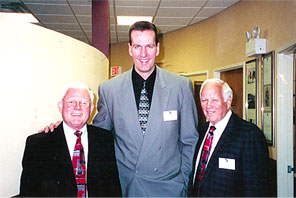
the chiropractor’s chiropractors
The Cox brothers have achieved a tremendous amount since 1974. Not only have they maintained Dr. Gonstead’s practice, but they have also expanded it. The Cox brothers, with the help of three additional staff doctors, increased the patient volume per day by 75 percent. While most practices attract patients from a five-mile radius, 88 percent of the Gonstead clinic’s patients now travel over a hundred miles. Through the Cox brothers’ excellence in care, patients now come from every state in the union, and all the provinces in Canada, and 25 foreign countries. In addition, they have also become known as the chiropractor’s chiropractors.
Full Back Xrays
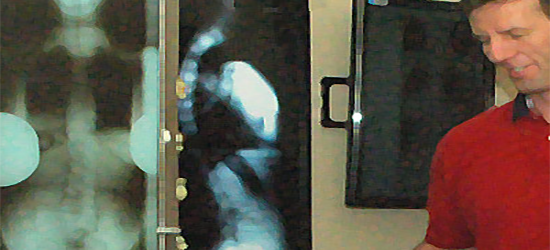
So what’s the deal with X-rays? What are they good for? Do we need them?
I personally want to determine the condition of the discs (the ligaments / cushions between the vertebrae) as well as the degeneration that has occurred. X-rays are taken in a standing position, often referred to as the “pain position”. A lower X-Ray dose, better films, and even digital X-Rays (like we have it in our office) can reduce radiation significantly. However, we don’t x-ray pregnant women or young children unless unusual circumstances exist.
Cervical Chair
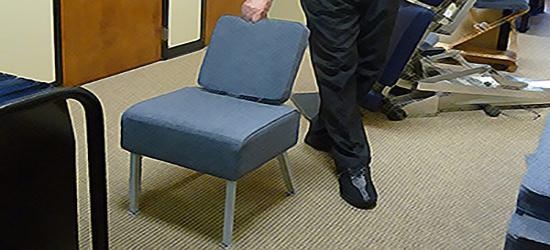
“The first time I looked at the Gonstead equipment it looked to me like furniture covered with carpet” said one of my patients a long time ago. It’s kind of funny, but that’s how it still looks to me as well. Fortunately, everything has a purpose. It is all meant to improve the adjustment of the spine. Let’s take this chair for example. It was first developed in 1925, with a back to it that one can raise or lower. When it is lowered it gives access to the patient’s back when they are being examined. When it is raised it gives the patient stability for Gonstead cervical adjustment.
Knee Chest Table
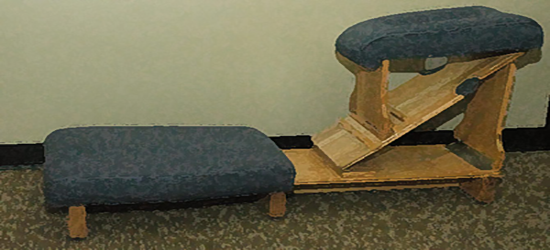
Imagine you are a cabinet maker in 1924. The economy is booming during the roaring 20’s. You are sitting in your little shop waiting for customers, and in walks a short stocky man by the name of Dr. Gonstead. He wants you to modify a chiropractic table. “Make it more comfortable, so the patient can relax, even a pregnant woman. Also give it a slight slant (the back is a little elevated) and make it portable. Don’t forget to use good wood.” The result is the table shown in the photograph.
Side Posture Table
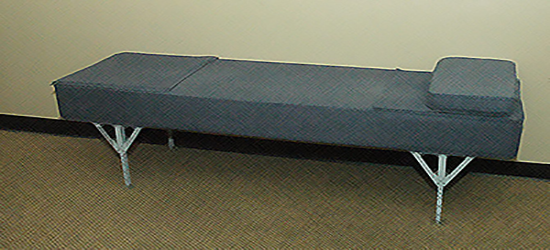
Designed in 1928, this table could double as an emergency bed for the doctor. It has the same comfortable cushioning as all the other tables, and the same material ensures that the patient doesn’t slide off. The sturdy legs on this particular table are specifically ordered for the doctor, because there aren’t too many doctors over 7 feet.
Hi Lo Table
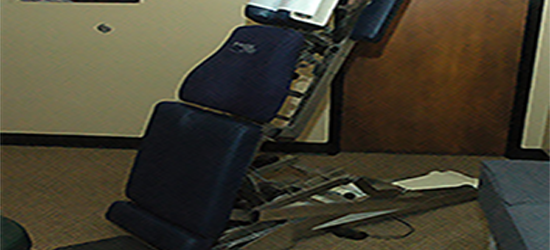
Let’s be honest, doesn’t this piece of machinery look like a torture device? However, according to my patients, it is one of the most comfortable tables you will ever lay on. It is so special because the patient actually walks up to it and the table brings the patient down into the prone position in a slow, gentle, and safe motion. After the adjustment the table puts you back onto your feet. Almost anyone can lay comfortably on this table, even a pregnant women (unless you weigh more than 450 lbs.)
Nervoscope
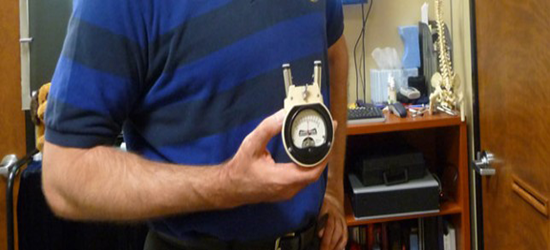
The round part of this instrument houses a meter, and the two probes detect a temperature difference of up to 0.02 degrees Fahrenheit. It is used to detect heat from nerves on your back that are inflamed from vertebra misalignments and irritation. Usually one side of the spine heats up more than the other, and that is why this instrument measures both. In addition, we also use visualization, static and motion palpation, and X-Rays.








